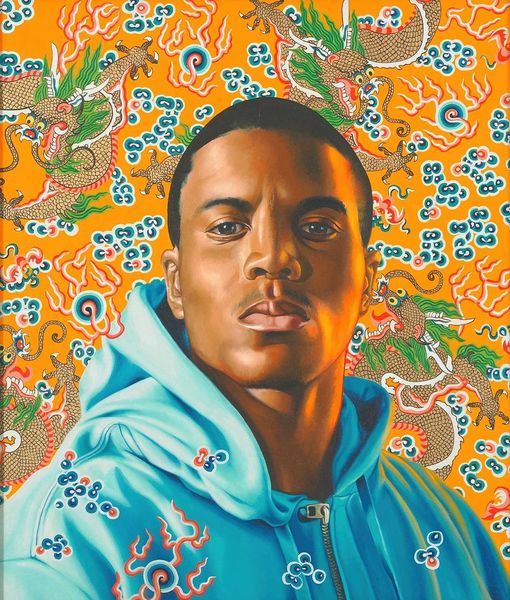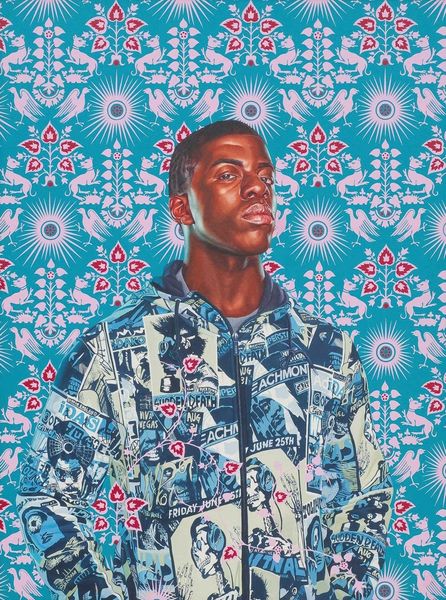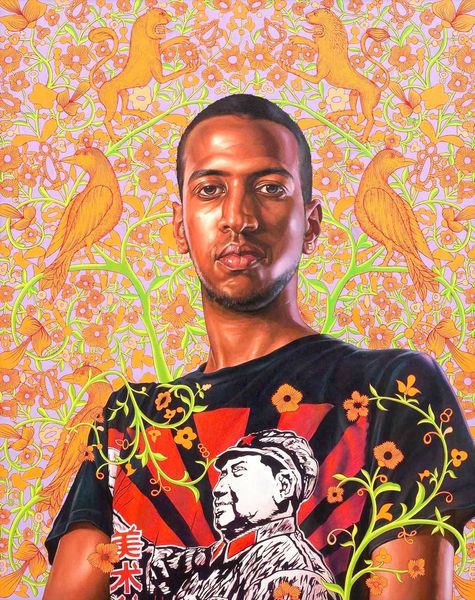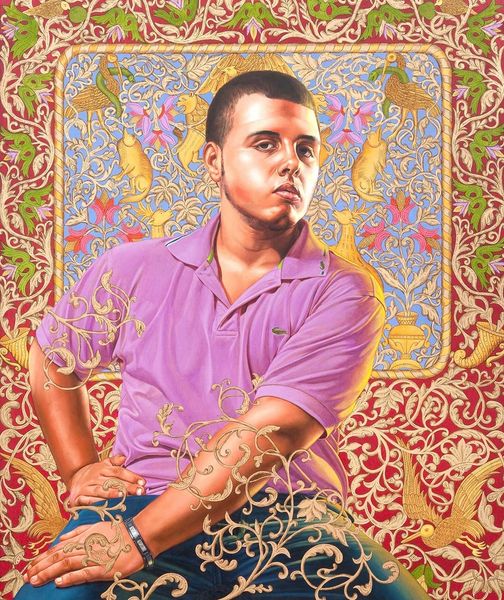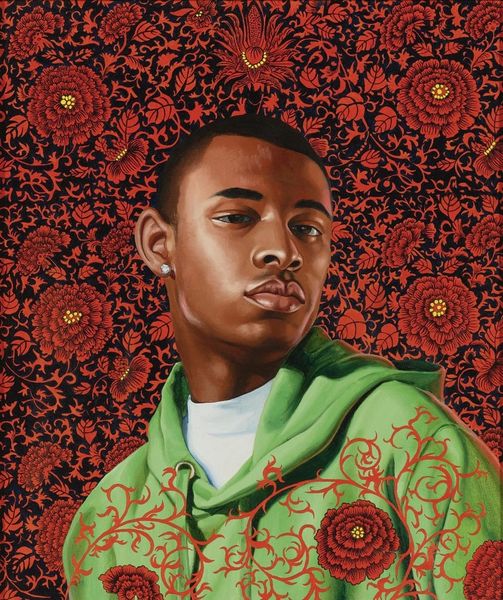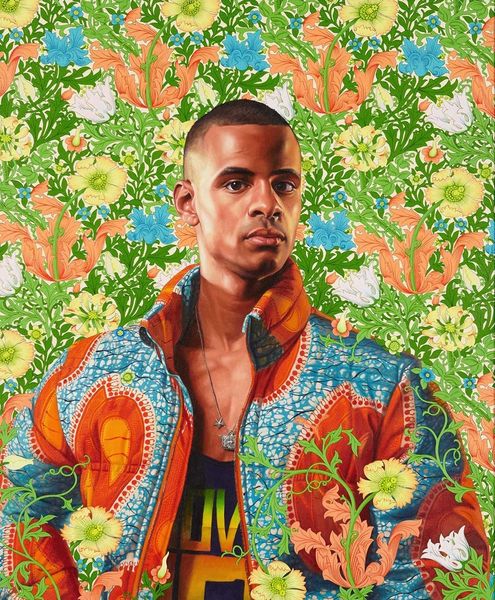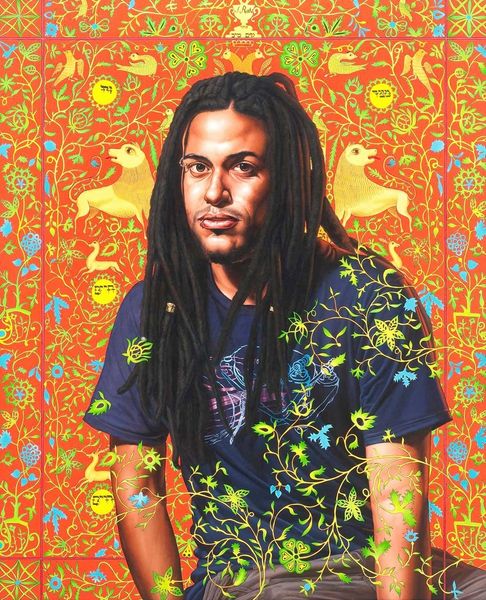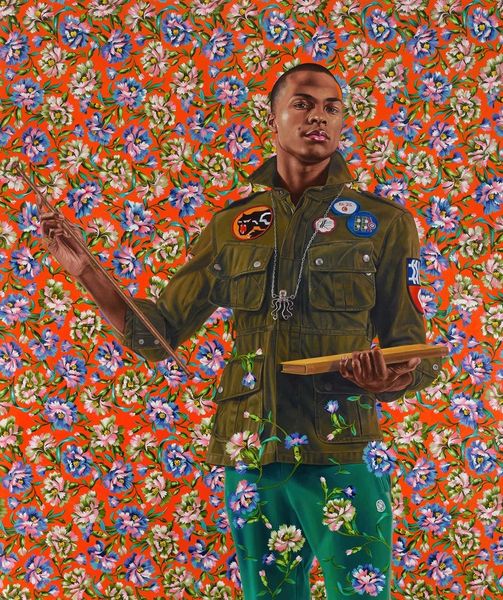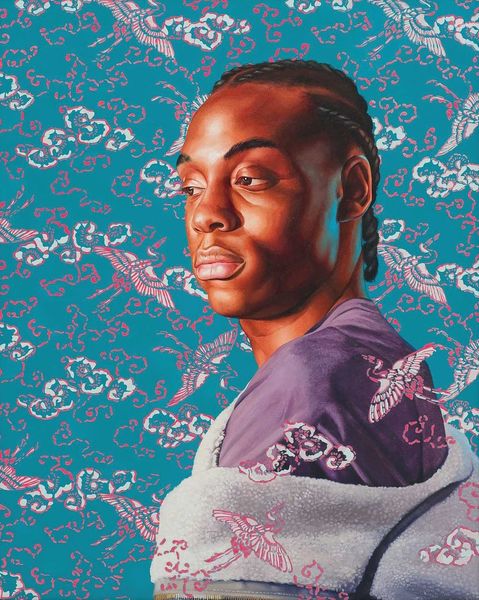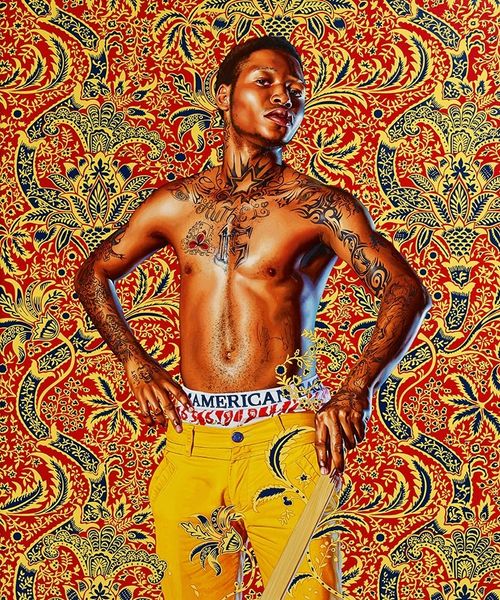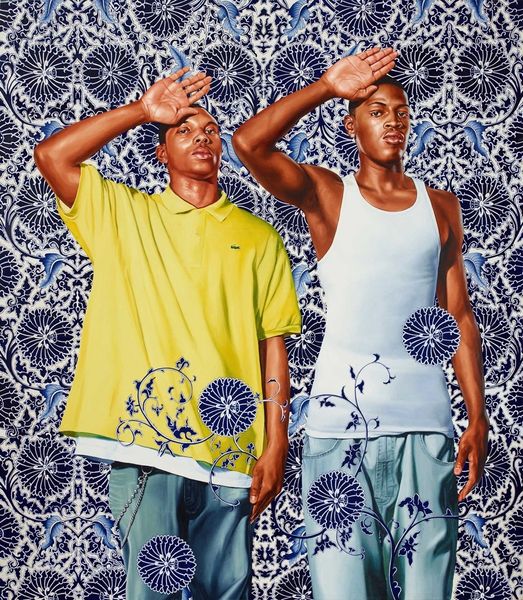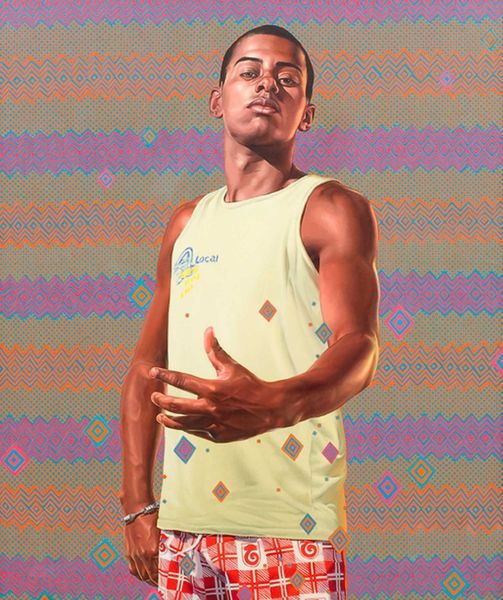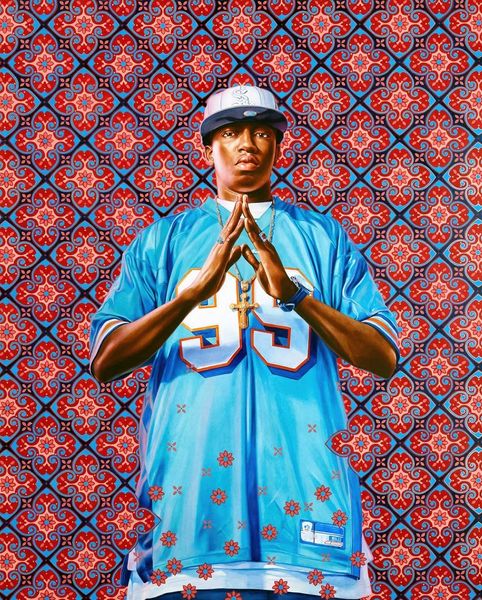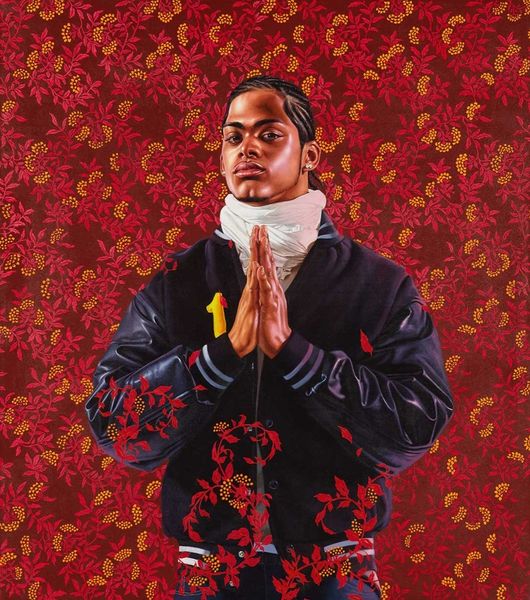
#
pattern-and-decoration
Copyright: Modern Artists: Artvee
Curator: Kehinde Wiley's "David Ayelin," completed in 2011, strikes me as an immediately compelling work blending portraiture with elements that nod towards pop-art. Editor: Yes, the subject’s pose exudes self-assurance, but my eyes are equally drawn to the surrounding symbols. They're arranged as a backdrop to communicate not just about this individual, but something more. Curator: I agree. Wiley's works intentionally challenge notions of power, race, and representation, and that includes a purposeful interplay of diverse iconographic symbols and patterns drawn from art history and street culture. Notice the Judaic script in the arabesque motif. This positions the portrait in the long tradition of sacred art, elevating it beyond a mere likeness. Editor: And there's such striking visual tension there. Look at his contemporary T-shirt – branded sportswear, really. Juxtaposed against that detailed backdrop, what kind of cultural statement do you think Wiley aims to communicate? Is this about assimilation or reclamation? Curator: Wiley often explores how Black identity intersects with and sometimes subverts historical canons. Placing the figure in front of this detailed arabesque pattern compels the viewer to consider the historical exclusion of Black bodies from the spaces of power traditionally represented in art. The floral details, also found in much earlier works, add another layer. Editor: Precisely. We're drawn to the tradition represented in the imagery behind the figure: the stylized plants are so familiar as representations of fecundity, wealth, earthly paradise… Wiley subtly connects his figure to this visual history. Does this help us to recognize cultural continuity? Curator: Absolutely. It serves as a visual strategy to question those canons, and in so doing, highlight how those from the African diaspora are often made invisible within the framework of Western cultural production. Editor: It's thought-provoking how the seemingly disparate symbols unify in Wiley’s vision. Curator: Indeed. Wiley pushes us to interrogate art history, prompting crucial dialogues about identity and belonging in a world reshaped by intercultural exchange.
Comments
No comments
Be the first to comment and join the conversation on the ultimate creative platform.
